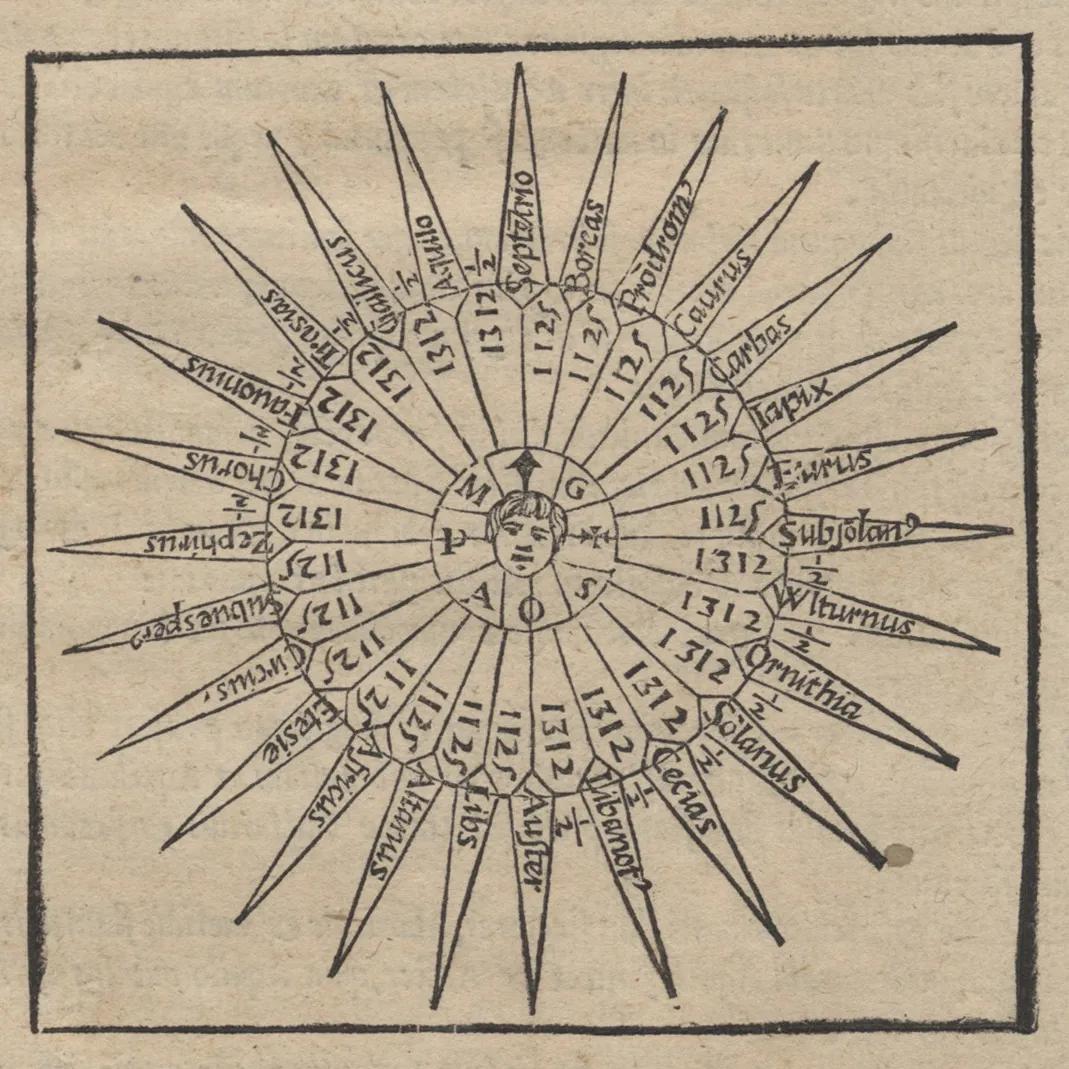The compass rose has its roots in the ancient classification of the winds. The eight major winds were divided into half and quarter winds to give a 'wind rose' of 32 points. These points correspond to the points of the modern compass, making Zephyrus the west wind and Boreas the north wind.
Wind roses appear in many early treatises on navigation. The wind rose shown in the illustration is from Michael Angelus Blondus' treatise De Ventis et Navigatione, published in Venice in 1546. It is unusual in having only 26, rather than 32 points, meaning that Zephirus, the west wind, is not directly opposite Eurus, the east wind. The following chapter is even more interesting, as it gives a very early account of sailing to the New World.
Presumably early navigators would have followed these instructions, although the use of the 26 point compass would not be recommended!
This treatise is one of many books in the S P Thompson rare book library on navigation. Thompson was especially interested in the compass as an example of the early use of magnetism. He collected a number of works on the subjects as well as an early example of a Chinese compass, which is also in our archives.

